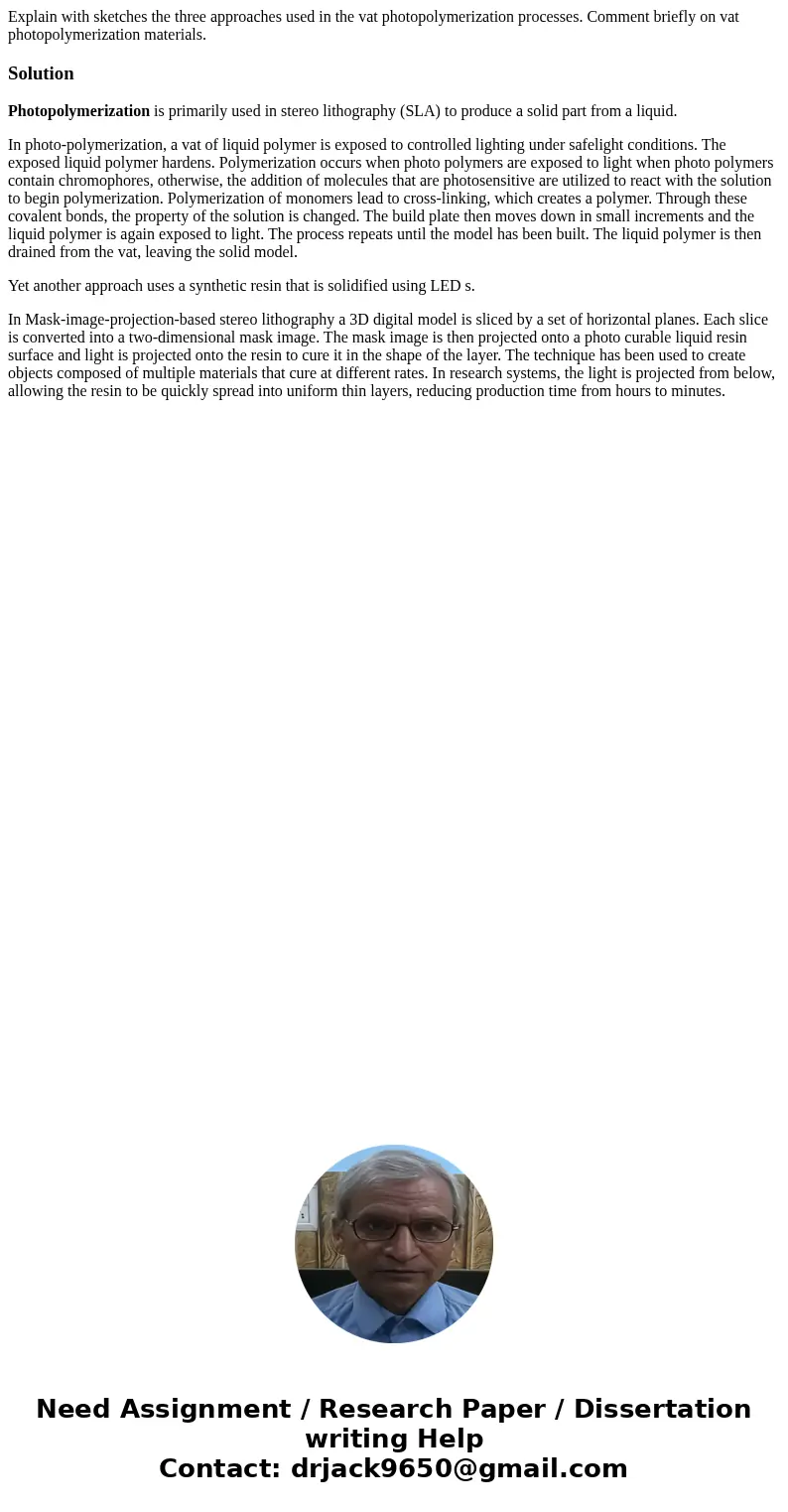Explain with sketches the three approaches used in the vat p
Explain with sketches the three approaches used in the vat photopolymerization processes. Comment briefly on vat photopolymerization materials.
Solution
Photopolymerization is primarily used in stereo lithography (SLA) to produce a solid part from a liquid.
In photo-polymerization, a vat of liquid polymer is exposed to controlled lighting under safelight conditions. The exposed liquid polymer hardens. Polymerization occurs when photo polymers are exposed to light when photo polymers contain chromophores, otherwise, the addition of molecules that are photosensitive are utilized to react with the solution to begin polymerization. Polymerization of monomers lead to cross-linking, which creates a polymer. Through these covalent bonds, the property of the solution is changed. The build plate then moves down in small increments and the liquid polymer is again exposed to light. The process repeats until the model has been built. The liquid polymer is then drained from the vat, leaving the solid model.
Yet another approach uses a synthetic resin that is solidified using LED s.
In Mask-image-projection-based stereo lithography a 3D digital model is sliced by a set of horizontal planes. Each slice is converted into a two-dimensional mask image. The mask image is then projected onto a photo curable liquid resin surface and light is projected onto the resin to cure it in the shape of the layer. The technique has been used to create objects composed of multiple materials that cure at different rates. In research systems, the light is projected from below, allowing the resin to be quickly spread into uniform thin layers, reducing production time from hours to minutes.

 Homework Sourse
Homework Sourse